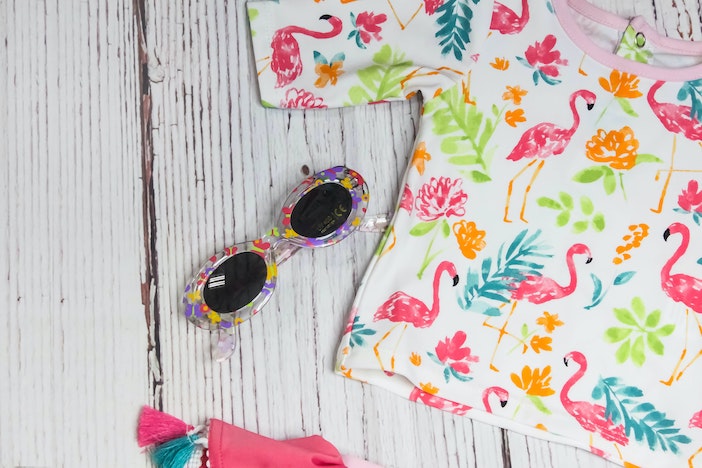When I was expecting our first daughter, my sister-in-law gave us our baby’s first gift: a blue babygro set. “Blue?” I asked, puzzled. For although I’m not a pink and sparkly kind of person, I still thought the color blue belonged to the boys’ club.
A few years down the road and our daughter is old enough to pick and choose her clothes. Her favorite color? Blue.
Society has long dictated that garment colors (and to some extent, sports activities, and names) should reinforce gender stereotypes, with certain being ‘for boys’ and others ‘for girls’. And the message runs deep: I admit that I am also prone to color bias. Last week while shopping in a high street clothes store, our daughter chose a … you guessed it… blue T-shirt, from the boys’ section. I pointed this out saying, “Honey, you may bump into a boy wearing the same T-shirt”, to which she – and her dad – replied, “So?”. Consider me told!
I decided to do a bit of digging and try to unravel how gender norms have affected the way we raise our kids in three key ways: clothing, names, and sports.

Clothes marketing at girls is big on pink and purple… but boys deserve flamingos too!
Clothing
A pink T-shirt with a smiling, cute, cuddly animal, emblazoned with the words “Cute Princess” will be most likely seen on a girl – portraying that they are or should be exactly that; cuddly, sweet, domesticated, and not much else.
Likewise, chances are that a shirt with “Surf Champ”, “Explorer”, “Future Boss” or with a fierce roaring bear is more likely to be found in a boys’ section of a clothes store. There’s nothing wrong with these messages. But shouldn’t they appear on the clothing of both genders? Unfortunately, as recently as 2017 the shoe brand Clarks was criticized for selling a girls’ shoe range called “Dolly Babe” and a boys’ range called “Leader”, clearly showing that the industry has a long way to go.
And it’s not only about names or messages emblazoned on clothing, but the actual design themselves: garment stereotyping goes further in the portrayal of pre-destined roles for boys and girls with boys shown as the seemingly more outdoorsy, adventurous and daring type, and clothes to match this perceived nature. On the other hand, girls are stuck with impractical skirts and tights, making outdoor fun challenging while boys will have shorts and other loose clothing for easy movement. And don’t get us started on the great Pocket Problem…
In close-minded societies, boys and girls who defy these societal norms can be seen as “weak” or “trouble” respectively and these tired notions on how boys and girls should dress don’t stop at children but extend to adults too, with a woman who adopts an androgynous look seen by some as threatening and ‘not woman enough’, while a man who favors pink shirts may have his ‘manliness’ put into question.
Names
Names, and whether they are considered feminine or masculine is intrinsically tied to culture and history, and varies enormously around the world. And in recent years, we’ve seen a rise in epicene first names like Hayden, Alexis, Casey, Jordan, Taylor, Drew, Kyle. Two of the daughters of veteran actor Kelsey Grammar (whose own name is quite androgynous) are named Spencer and Mason, and Jessica Simpson named her firstborn daughter Maxwell, a solidly masculine name. Actress Reese Witherspoon’s mother clearly wasn’t into traditional girl names when she gave birth to her. Neither was singer Billie Eilish’s mum.
Australia has also seen a new trend of gender-bending unisex names like Alfie and Charlie for girls and the name Emerson, which is traditionally a girl’s name, has also seen a rise in popularity with boys.
However, a few journal articles examining androgynous names and the maintenance of gender boundaries have noted that although there has been an increase in the number of androgynous names in recent years, the overall use of these names is barely increasing, especially among parents of daughters.
While parents may hesitate over choosing the best name for their children, when one looks at careers of people like Taylor Swift or Blake Lively, we can see that having an unusual name doesn’t necessarily hurt your career.

There’s no good reason that little girls can’t play baseball… or be called Austin for that matter!
Sports
It’s generally accepted that girls and boys can participate in the same sports activities, on the same team, until the onset of puberty after which, boys tend to gain an advantage over girls in both strength and size. So, for fairness – and to some extent, safety – mixed-gender teams are often phased out at a certain age, although if there’s no team for girls in a certain sport, some laws allow girls to compete on a boys-only team.
A lot of world competitions like the Olympics, both men and women teams are very well represented in many of the disciplines like swimming, skating, boxing and many more.
With the rise of feminist movements that want to dismantle what they consider arbitrary gender distinctions, we may see a challenge to some of these parameters and stereotypes – and a change in attitude around nuances of what society expects in terms of gender behavior.
Pearl Kasujja-Van de Velde is a dual Ugandan/Belgian national, a mother to two amazing girls, a wife, and a storyteller. To get in touch, visit her website at www.pearlkasujja.com.
KEEP READING: Working Out When to Allow Pajama Parties
Photos: Unsplash





